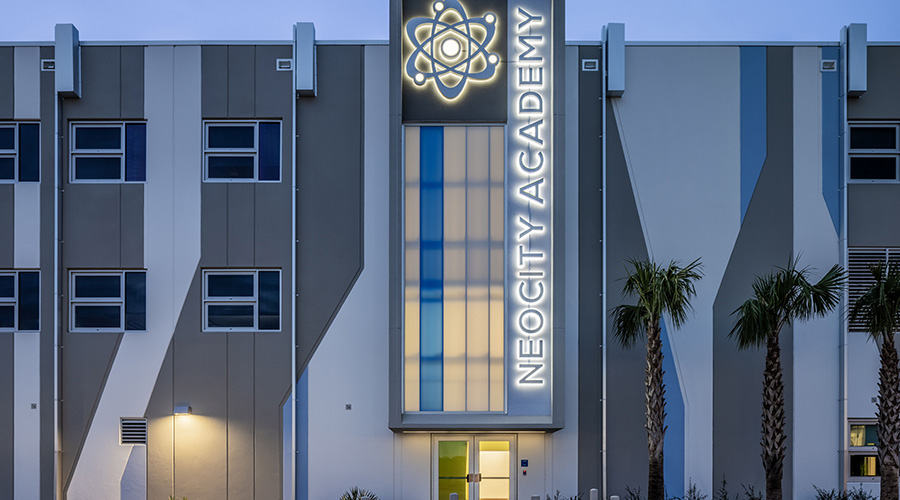Sustainability: Tactics to Avoid Failure, Embrace Success
OTHER PARTS OF THIS ARTICLEPt. 1: This Page
The roles of maintenance and engineering managers and their staffs are integral to the sustainability of building and grounds operations for institutional and commercial facilities. But a lack of success in these areas naturally falls on these same people.
As a result, some managers fail to take full advantage of opportunities for sustainable improvement because they believe they will not receive acknowledgement for their efforts, or worse, might receive criticism. This mindset creates an unfortunate boomerang that eventually leads to negative recognition when improvement opportunities become operational problems.
Do you seek recognition, or do you stay committed to improving building efficiency and sustainability, regardless of how it reflects on you? For managers who fall into the latter category, the battle is already half won. It might seem to be a thankless task, but identifying areas for improvement is critical. Otherwise, managers can set up their facilities for failure and their departments for criticism.
New technologies might have changed the game of maintenance and engineering management, as well as sustainability. But following a few basic tenets will help avert failures and earn managers recognition they deserve.
Take nothing at face value. It is disheartening to find so many managers who fall victim to claims of a green product without doing the research to determine if it is the best fit for the facility.
One recent example involved a lighting replacement project that went terribly wrong. The facility engineer replaced 4,000 lamps in 1,000 fixtures. The system's touted green features were lower lamp wattage with a higher lumen output and a lower mercury content.
But the engineer overlooked the fact that the previous lamps lasted 35 percent longer than the replacements, and that the mercury content in the new lamps was only a decimal point lower than the previous lamps. Worse yet, only 50 percent of the fixtures and new lamps had compatible ballasts. As a result, one-half the lamps sat in storage, wasting funds the department could have spent on other improvements. To make matters worse, poor coordination between the engineer and the recycling staff resulted in the replaced lamps going to the landfill instead of being recycled. This lack of long-term insight contributes to climate change more than anything else.
Overestimated benefits still offer value, but never underestimate the size of the problem. Today's sophisticated software applications offer new assessment tools managers can use to calculate a scale for operational improvements related to sustainability. Although software systems can overestimate the performance of an improvement measurement, it is rare that a measure has no impact. Even if the realized benefit is less than the estimated savings, it is still a step in the right direction toward more sustainable operations.
But many managers ignore a potential improvement opportunity deliberately because they are too overwhelmed with the amount of work to accomplish the task. This attitude authorizes the problem to grow. When a system fails because a manager ignored the chance for improvement, results can include capital losses in the forms of employee absenteeism, sick-building syndrome, and lower productivity.
Correcting after the fact equates to poor planning. Operations manuals that establish proper protocols for every sub-system often include preventive maintenance (PM) procedures essential for supporting sustainability measures, but few people review this section.
Whether a manager decides to keep this section within the operations manual or use it as a stand-alone document, it should be the staff's go-to document for averting problems. Many managers identify PM tasks as critical but do not ensure technicians carry them out consistently.
Use a confidant to stay on track. There is no reward for managers in bearing the brunt of their situation alone. Instead, they can create confidants in a junior engineer, a staff member, or the boss. In fact, some new tracking software applications are so sophisticated they can fill this role by allowing managers to comprehensively document incidents. Basically, managers need a trusted entity that tracks the facility's health and its processes in their absence.
Also, when working with an outside vendor, managers need to show they have their facilities' best interests in mind, and one way to do this is by discussing operational shortcomings. In one instance, a manager in a New England facility had worked his way up to his position from the janitorial department.
For the eight years he had been in charge of building operations, occupants constantly complained of being too cold. Thanks to his honesty about this predicament during a commissioning process and a review of the building operation plan, we uncovered that he had unwittingly allowed two chillers to operate 24/7.
Learn the language, even if you cannot speak it. How often do managers reach out to different departments within the organization to identify sustainability opportunities that lead to collective improvement? Not often enough, and communication is the roadblock.
One department's personnel might be aware of features or programs in other areas but hesitate to ask questions because they are not conversant on these features' savings metrics. For example, landscape staff members might know the maintenance department has installed water-efficient plumbing fixtures in facilities but have no idea of the amount of water the fixtures are saving.
Managers and staff need to talk with each other so departments are clear on each other's metrics. Managers do not have to master each others' trades, but each should gain a true working knowledge to understand the way it affects the department's decisions. Otherwise, the organization will fail to foresee possible opportunities to integrate sustainability strategies that could lead to win-win scenarios.
Chase the purpose, not the reward. When meeting external compliance requirements, managers must focus on a task's intent. In the rush to comply with rating systems — for example, the U.S. Green Building Council's Leadership in Energy and Environmental Design (LEED) system — it is easy to lose track of the system's overall intent and pursue the rewards instead. This short-sighted process can seriously backfire.
For example, when seeking LEED certification, some managers purchase items or bring in systems they do not actually need. They even avoid systems that might be more efficient just to attain a credit. Managers can rest assured that if they focus on making your building perform better, the sustainability certifications will come. Beyond that, managers will succeed in their efforts, and recognition for the department for doing the right thing will follow.
Rasika Savkar, CEM, LEED AP BD+C — rasika@greenbuildingservices.com — is a technical consultant at Building Insights, an LLC of Green Building Services Inc., in Portland, Ore. She specializes in energy simulation and analyses and shading analyses, ecological footprints, energy audits, thermal-comfort testing, measurement and verification plans, and LEED documentation.
Agree? Disagree? Have something to say?
We want to hear from you. Visit myfacilitiesnet.com/members/rasika-savkar/default.aspx, and “Start a Conversation.”
Related Topics:











